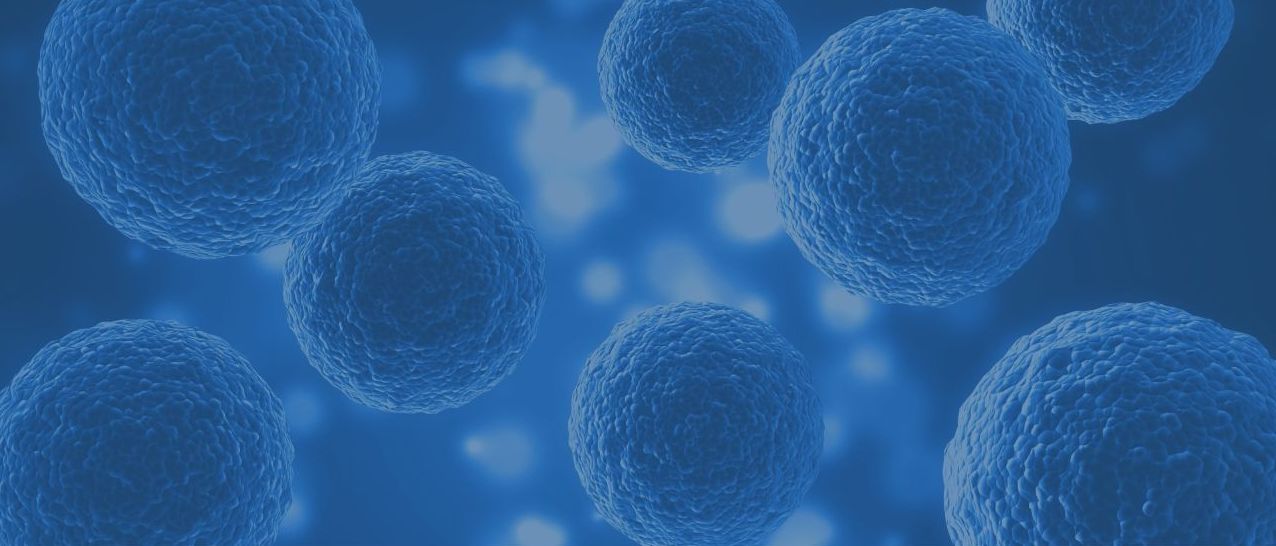Description
Nanomedicine represents a paradigm shift in healthcare, offering tailored and sophisticated diagnostic, imaging, and therapeutic solutions for unmet medical needs. This network unites an interdisciplinary team of 9 IBEC groups, fostering new collaborations to drive translational research with far-reaching societal implications. For this, 4 workshops will be held, covering basic and applied research: “Tools to study biological systems” will cover tools (imaging techniques, nanopatterned substrates, functionalized particles) to study biomechanics, cell behaviour, and signalling, relevant to understanding disease; “Selective targeting and biological barriers” will focus on ways to deliver therapies to otherwise inaccessible sites (BBB, lungs, biofilms); “Emerging nanotherapeutic modalities” will explore self-adaptive, stimuli-responsive, and immunomodulatory strategies; “Towards clinical translation” will address challenges and new models to bridge in vitro-to-in vivo and bench-to-clinic gaps. Talks and onsite discussions will ignite ideas, supported by a Teams channel to enable continued contact and lead to project proposals that will be pitched and evaluated in the final retreat.
NET-NANO counts on the participation of the following IBEC research groups:
- Bacterial Infections & Antimicrobial Therapies
- Bioinspired Interactive Materials and Protocellular Systems
- Cellular and Molecular Mechanobiology
- Molecular Bionics
- Nanobioengineering
- Nanoprobes & Nanoswitches
- Nanoscale bioelectrical characterization
- Smart Nano-Bio-Devices
- Targeted Therapeutics & Nanodevices
Contact us:
Iris Batalha: ibatalha@ibecbarcelona.eu
Network Members
Network Coordinator:
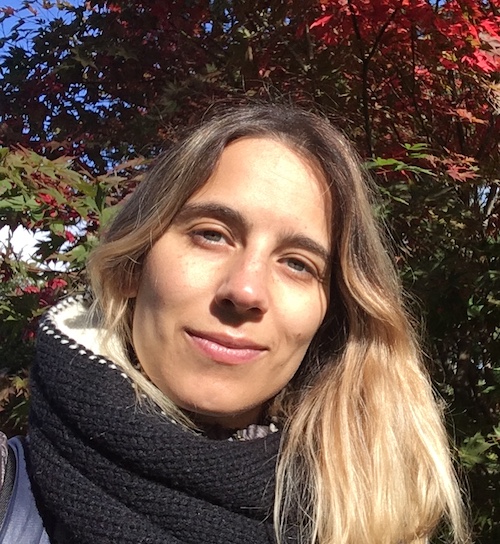
Iris Batalha
Senior Researcher
She works on developing nanomedicines that target cells through their metabolic phenotypes.
Network Representatives:
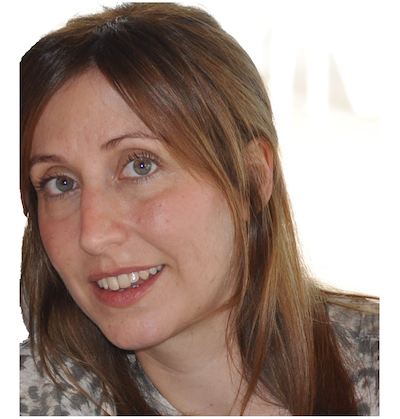
Anna Lagunas
CIBER-BBN Senior Researcher
She works on the interrogation of cells at the nanoscale to gather information on the spatio-temporal regulation of complex biological mechanisms.
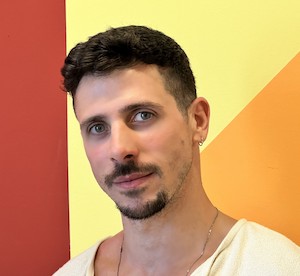
Juan Fraire
Senior Researcher
He works on exploring the synergy between nanocarriers, advanced light-triggered effects, and cutting-edge enzymatic nanomotors.
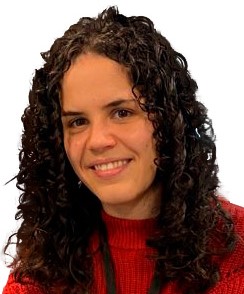
Núria Blanco-Cabra
Postdoctoral researcher
She works on innovative antibiofilm therapies, including the use of nanomedicine to target and cross bacterial biofilms.
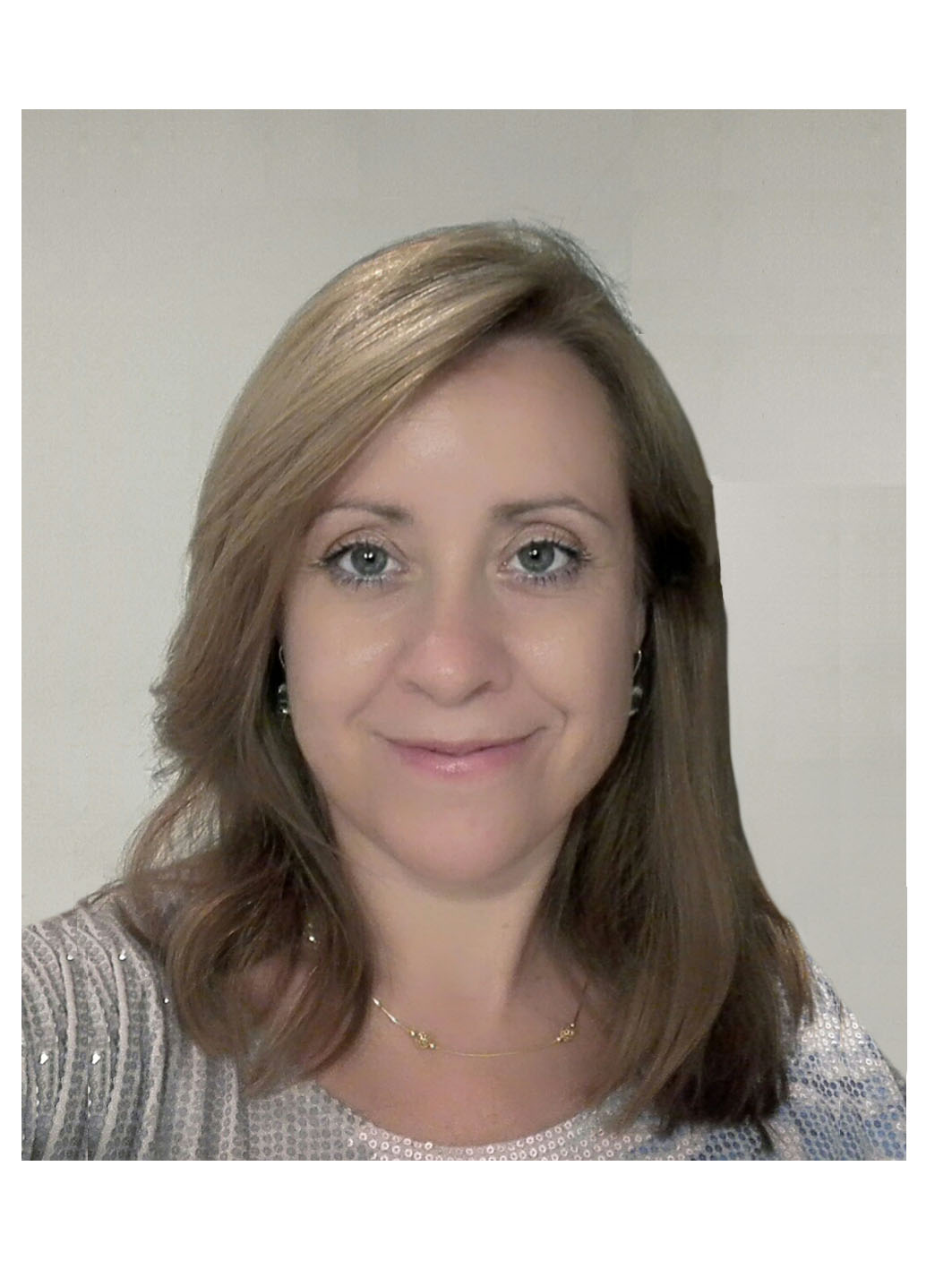
Silvia Muro
Group Leader
She works on the design of nanodevices for delivery of therapeutics to specific disease sites.
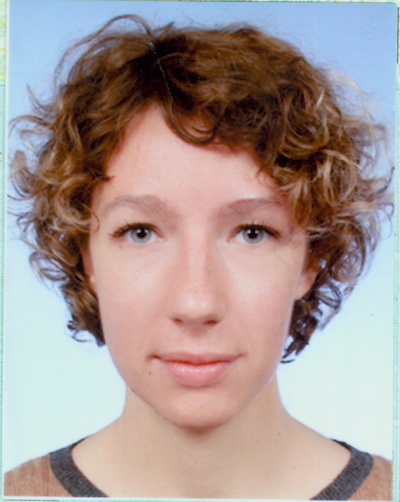
Galyna Malieieva
Senior researcher
She works on the development of new light-activatable nanoswitches for the control of neuronal activity with nanoscale precision for brain circuits studies and innovative neurotherapeutic strategies.
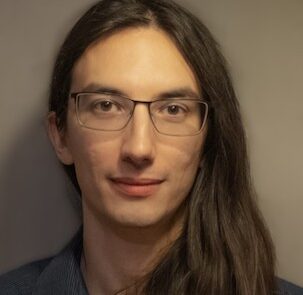
Adriano Caliari
Postdoctoral Researcher
He works on the introduction of specific receptors on xenobiotic membranes to trigger artificial phagocytosis.
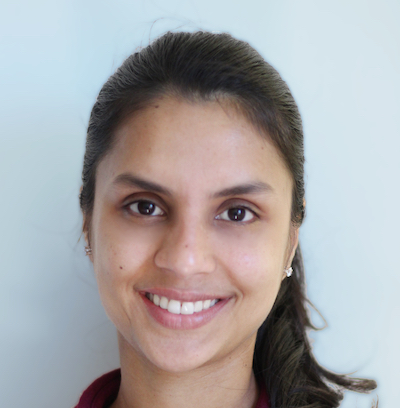
Mamatha Nijaguna
Postdoctoral Researcher
She works on the identification of mechanoinhibitors with potential therapeutic applications.
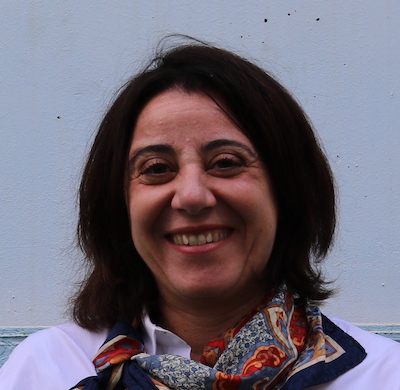
Annalisa Calò
Senior Researcher
She works on the transformations and nanoscale properties of different functional nanomaterials and on the biophysical characterization of biological entities by scanning probe techniques.
Network Programme
NET-NANO will organize 4 day workshops (WS) and a final retreat. Each workshop will feature two distinguished national or international experts and five IBEC speakers. Each WS will feature a “Challenge Board” to help ignite ideas and interactions, and to provide attendees with a platform to discuss and foster collaboration among groups and with external speakers.
Workshops information.
Workshop 1: Tools to study biological systems
Date and Venue
Monday 03/02/2025 · 09:00h – 15:45h
Dolors Aleu room, Cluster II, Parc Científic de Barcelona (PCB)
This first workshop will focus on cutting-edge tools and techniques used to investigate cellular processes and disease. The event will feature two plenary lectures by leading external experts, along with a series of presentations by IBEC researchers.
09:00 – Welcome from Network Coordinator
09:10 – Marina Giannotti, IBEC group “Nanoprobes andNanoswitches”, “Nanomechanics in seek for disease indicators”
09:40 – Aurora Dols Pérez, IBEC group “Nanoscale Bioelectrical Characterization”, “AFM as a tool for the study of drug delivery systems”
10:10 – Nisha Pawar, IBEC group “Molecular Bionics”, “Liquid phase Transmission Electron Microscopy and Machine Learning to understand structure and protein aggregation”
10:40 – Plenary: Elisabetta Ada Cavalcanti-Adam,University of Bayreuth (Germany), “Surface Nanopatterning for Investigating Receptor Clustering and Crosstalk in Cell Adhesion and Migration”
11:40 – Coffee Break & Challenge Board
12:10 – Anna Lagunas, IBEC group “Nanobioengineering”,“Unveiling membrane protein function with nanotools”
12:40 – Pau Gorostiza, IBEC group “Nanoprobes and Nanoswitches”, “Interprotein charge transfer in respiratory and photosynthetic chains”
13:10 – Networking Lunch
14:10 – Plenary: Prof María García-Parajo, Institute of Photonic Science (ICFO) & Catalan Institute for Research and Advanced Studies (ICREA), “Single molecule imaging tools to unravel spatiotemporal compartmentalisation in living cells”
15:10 – Roundtable Discussion
15:40 – Farewell from Network Representatives
Plenary talks details:
Prof. Elisabetta Ada Cavalcanti-Adam, Chair of Cellular Biomechanics, Faculty of Engineering Science, University of Bayreuth, Germany.
Surface nanopatterning for Investigating Receptor Clustering and Crosstalk in Cell Adhesion and Migration
Advances in nanotechnology have provided powerful tools for precisely controlling the physical and chemical microenvironment and for guiding cellular behavior and communication. This talk will explore the use of surface nanopatterning techniques and their functionalization with adhesive ligands to study receptor clustering and its implications for crosstalk in the adhesion and migration of single and collective cells. We aim to elucidate the mechanisms underlying integrin signaling, cadherin-mediated cell-cell junctions, and their interplay during migration. Examples will highlight how these approaches provide understanding of fundamental cell biology and their potential implications in tissue regeneration and cancer metastasis.
Prof. Dr. E. Ada Cavalcanti-Adam is currently a full professor for Cellular Biomechanics at the University of Bayreuth, Germany. Education: doctor degree in Dental Medicine from Italy, M.Sc. degree in Biology from University of Pennsylvania (USA) and PhD in Biosciences at Heidelberg University.
She was Postdoctoral Fellow and later project leader at the Max Planck Institute for Intelligent Systems in Stuttgart. After completing her Habilitation, from 2017 until 2023 she was research group leader at the Max Planck Institute for Medical Research in Heidelberg and head of the Central Scientific Facility “Cellular Biotechnology; she also served as adjunct faculty at the Heidelberg University.
In 2004 she received the Marie Curie Intra-European fellowship, in 2008 a fellowship from the „Christiane Nüsslein-Volhardt Foundation“ and the Prize „For Women in Science“. Her research focuses on the mechanobiology of cell adhesion, investigating how cells interact with their physical environment at the molecular level.
Prof. Dr. María García-Parajo, Institute of Photonic Science (ICFO) & Catalan Institute for Research and Advanced Studies (ICREA).
Single molecule imaging tools to unravel spatiotemporal compartmentalisation in living cells
Organisation by compartmentalisation is a general property of natural systems that efficiently facilitates and orchestrates biological events in space and time. Super-resolution microscopy and single molecule dynamic approaches have revealed that compartmentalisation starts at the nanometre scale with molecules organising and interacting transiently with each other following modularity principles. In this talk, I will provide an overview of recent super-resolution and single molecule dynamic approaches ideally tailored to study biological systems with exquisite spatiotemporal resolution. I will describe the combination of multicolour single particle tracking (SPT) at different labelling densities to resolve in real time multi-molecular interactions in living cells. Low density SPT conditions allows to reconstruct the mobility of individual molecules and their transient interactions, while high density conditions provide unique information on the spatial and temporal length scales of cellular regions re-visited (or forbidden) for molecules. We find that molecular diffusion, transient multi-molecular interactions and dynamic re-modelling of the environment play key roles regulating biological function.
Maria Garcia-Parajo is an ICREA Research Professor at ICFO-Institute of Photonic Sciences, leading the Single Molecule Biophotonics group. Her research focuses on the development of advanced optical techniques to the study of biological processes at the single molecular level on living cells. She obtained her PhD in Physical Electronics in 1993 at Imperial Colleague, UK. Previous experience includes research at L2M-CNRS Paris (France) and University of Twente (The Netherlands). To date she has published more than 200 publications and delivered more than 250 talks at international conferences and workshops upon invitation. She coordinates several international research projects, and is member of various international scientific advisory, executive and editorial boards. She has received several prestigious awards, including the Young Academy Research fellow award from the Royal Dutch Academy of Sciences (1998), National Prize in Biophysics (2017), Advanced ERC grant (2017) and Emmy Noether Laurate from the European Physical Society (2020). She is co-coordinator of the Winter School in Advanced Microscopy Techniques for the Master in Interdisciplinary Sciences at BIST. Maria is actively involved in (inter)national actions to promote gender equity in Science.
Workshop 2: Selective targeting and biological barriers
Date and Venue
Friday 13/06/2025 · 09:00h – 15:45 h
Dolors Aleu room, Cluster II, Parc Científic de Barcelona (PCB)
IBEC’s Next-Generation Nanomedicine Network (NET-NANO) is dedicated to bridging nanomedicine research with practical applications, enhancing our ability to diagnose and treat human diseases effectively. As part of this initiative, a series of thematic workshops are being organised. The second workshop, scheduled for June 13th, will delve into nanomedicine design for selective targeting and overcoming biological barriers. Leading international experts and IBEC researchers will present on topics ranging from nanoparticle design strategies for penetrating barriers like the blood-brain barrier, retina, and bacterial biofilms, to innovative targeting approaches using lipid nanoparticles, multivalent polymeric nanoparticles, and enzymatic nanomotors.
Scheduled Program:
09:00–09:10 – Welcome from Network Coordinator
9:10–09:40 – Prof. Silvia Muro (Targeted therapeutics and nanodevices, IBEC)
“Isoform-dependent targeting and its relevance for the design of drug delivery strategies”
09:40–10:10 – Dr Núria Blanco-Cabra (Bacterial Infections: Antimicrobial Therapies, IBEC)
“Targeting and crossing bacterial biofilms with nanomedicine to overcome chronic infections.”
10:10–11:10 – Plenary: Prof. Katrien Remaut (Ghent University, Belgium)
“Investigating and overcoming biological barriers to lipid nanoparticle mediated messenger RNA delivery to the retina”
11:10–11:40 – Coffee Break & Challenge Board
11:40–12:10 – Marco Basile (Molecular Bionics, IBEC)
“Multivalent Nanoparticles as Modulators of the Blood–Brain Barrier: A New Paradigm for Superselective Nanomedicine”
12:10–12:40 – Dr David Esporrín Ubieto (Smart Nano-Bio-Devices, IBEC)
“Enzymatic nanomotors with enhanced motion in viscous media for advanced biomedical applications”
12:40–13:10 – Dr Sílvia Pujals (IQAC-CSIC and IBEC)
“Super resolution methods for nanomedicine”
13:10–14:10 – Networking Lunch
14:10–15:10 – Plenary: Pablo Scodeller (Institute of Advanced Chemistry of Catalonia (IQAC-CSIC), Spain)
“Identifying targeting peptides and biomarkers using phage-display”
15:10–15:40 – Roundtable Discussion
15:40–15:45 – Farewell from Network Representatives
| Prof. Katrien Remaut, Ghent University Investigating and overcoming biological barriers to lipid nanoparticle mediated messenger RNA delivery to the retina Lipid nanoparticle (LNP) mediated messenger RNA delivery to the retina has potential to treat a variety of retinal disorders by the transient expression of proteins, benefitting those applications that require short-term intracellular protein expression such as reprogramming or genome editing. Efficient delivery of mRNA to the retina remains however a major bottleneck. In short, LNPs should encapsulate sufficient amounts of mRNA, protect mRNA against degradation, be mobile in the vitreous and migrate over the inner limiting membrane (ILM) to reach the retinal cells. Furthermore, LNPs should be taken up in the desired cell type and avoid immune recognition during all steps of the delivery pathway. This lecture will discuss several extracellular and intracellular barriers encountered after intravitreal or subretinal injection of LNPs and the ex vivo models that were developed to study them. Katrien Remaut is an associate professor at Ghent University with expertise in ocular drug delivery barriers. She is the author and co-author of numerous peer-reviewed publications in journals such as Advanced Drug Delivery Reviews, Biomacromolecules, Journal of Controlled Release, ACS Nano, and Nature Biotechnology. She has received several scientific awards, including the Prize of the Royal Academy of Medicine for Scientific Research in Pharmacy for the best PhD thesis (2008–2011). In 2013, she was elected as a member of the Young Academy in Flanders. Katrien teaches biochemistry to second-year pharmacy students at the Faculty of Pharmacy, Ghent University, consistently earning excellent student evaluations. She serves as Associate Editor at the European Journal of Pharmaceutics and Biopharmaceutics and sits on the editorial board of the Journal of Controlled Release. Her main research interests include ocular delivery of nucleic acids such as messenger RNA, siRNA, and antisense oligonucleotides. She employs advanced fluorescence microscopy methods to study the physicochemical properties and biological barriers affecting non-viral nanoparticles. Her current work focuses on developing lipid nanoparticles (LNPs) for efficient, safe, and non-immunogenic mRNA delivery to the retina. Dr. Pablo Scodeller, Institute of Advanced Chemistry of Catalonia (IQAC-CSIC) Identifying targeting peptides and biomarkers using phage-display Diseased vasculature and tissue can be probed very finely using in vivo phage-displayed peptide libraries. This methodology allows the identification of peptides that reach the tissue of interest and bind to proteins in their native disease-specific environment and conformation. Since its introduction in 1996, this technology has led to the discovery of various targeting peptides, some of which are now in advanced clinical trial stages. Over the last decade, using this powerful approach, we have identified a diverse array of targeting peptides specific to brain injuries, Alzheimer’s disease, tumor-associated macrophages, and glioblastoma. Importantly, receptor identification for these peptides has revealed unexpected molecular alterations in the vasculature of Alzheimer’s and glioblastoma, constituting novel biomarkers. This talk will describe how these peptides are identified and used to deliver drugs to tumor-associated macrophages in breast cancer, to glioblastoma, and present new evidence for a novel glioblastoma biomarker. Dr. Pablo Scodeller earned a degree in Biomedical Engineering from the University of Mendoza (Argentina) in 2005. He pursued a PhD in Chemistry at the University of Buenos Aires, focusing on electrochemistry and nanobiosensors, which he completed in 2011. He followed this with a postdoctoral fellowship in Materials Science, studying silica nanoparticles for biomedical applications. In 2013, he joined the lab of Dr. Erkki Ruoslahti (2022 Lasker Prize Laureate) in La Jolla, USA, for postdoctoral research on the tumor microenvironment. Two years later, he moved to the University of Tartu, Estonia, to work with Dr. Tambet Teesalu, a pioneer in tumor-penetrating peptides. In 2017, he received a Starting Grant from the Estonian Research Council, and in 2018, he was promoted to Associate Professor. In 2021, he was awarded a prestigious Ramón y Cajal contract in Spain. Dr. Scodeller has published 33 scientific articles, including first or co-first authorship in JACS and Nature Communications. His h-index is 22 with ~2,000 citations. He is co-inventor of 4 granted and licensed patents related to targeting peptides for cancer, brain injuries, and Alzheimer’s disease, and holds a pending patent on a peptide-drug conjugate for reprogramming tumor macrophages. He has been awarded five research projects as Principal Investigator, totaling over €500,000, and has supervised or is supervising 2 doctoral theses and 5 master’s theses. Dr. Silvia Muro, IBEC – ICREA Isoform-dependent targeting and its relevance for the design of drug delivery strategies Drug targeting aims to increase the site-specificity of therapeutics, often by coupling drugs or carriers to affinity molecules that recognize specific protein targets at disease sites. However, a long-overlooked challenge is that approximately 95% of these protein targets are not expressed as a single entity, but rather as multiple isoforms. As a result, targeting molecules may fail in clinical trials due to poor isoform specificity. By identifying the specific isoforms expressed by certain cell types or under particular disease conditions, it becomes possible to design more robust and effective targeting molecules. This concept of isoform-dependent targeting introduces a new and highly relevant paradigm in the field of drug delivery. Dr. Silvia Muro earned her PhD in Sciences from Universidad Autónoma de Madrid. She then moved to the United States, first joining the University of Pennsylvania and later the University of Maryland, where she achieved tenure in 2012. Since 2017, she has been an ICREA Professor at the Institute for Bioengineering of Catalonia (IBEC). Her research lies at the intersection of cellular biology and drug delivery, focusing on the biological mechanisms that govern cargo transport within cells and tissues. She leverages this understanding to develop targeted therapeutic strategies, particularly those involving intra- and trans-cellular transport. Dr. Muro has authored over 100 scientific publications, holds licensed patents, and serves on the editorial boards of several scientific journals. Her work has earned her prestigious awards from the Controlled Release Society and the American Society for Nanomedicine. She is also a Fellow of the American Institute for Medical and Biological Engineering (AIMBE). Dr. David Esporrín Ubieto, Institute for Bioengineering of Catalonia (IBEC) Enzymatic nanomotors with enhanced motion in viscous media for advanced biomedical applications Targeted drug delivery remains a significant challenge in biomedical research, particularly due to the difficulty of navigating through highly viscous biological fluids such as mucus and synovial fluid. A promising solution lies in self-propelled nanoparticles, or nanomotors (NMs), which can actively move through these complex environments. Silica-based NMs have been extensively studied for their established synthesis protocols, yet their high density and low water solubility limit their effectiveness in biological contexts. This presentation explores the shift toward next-generation organic nanomotors, specifically responsive nanogels—chemically cross-linked polymer networks that adapt their size and hydrophilicity in response to environmental cues like pH, temperature, and redox conditions. These properties greatly improve NM mobility in viscous media, reduce unwanted interactions with surrounding tissues, and enhance their biomedical utility. The talk will cover their design, synthesis, in vitro performance, and in vivo imaging applications. Dr. David Esporrín is a postdoctoral researcher at the Institute for Bioengineering of Catalonia (IBEC), under the supervision of Prof. Samuel Sánchez, and also serves as a lecturer at the International University of Catalonia (UIC). His research centers on the development of organic-based nanomotors with superior biocompatibility, degradability, and mobility for targeted biomedical applications. He earned his PhD at POLYMAT (University of the Basque Country, San Sebastián) under the supervision of Prof. Marcelo Calderón, focusing on polymeric gel systems for ocular drug delivery and protein interactions. Prior to that, he conducted graduate research at the Institute of Nanoscience and Materials of Aragón (INMA) in the group of Prof. Jesús Martínez de la Fuente, where he worked on peptide-based nanocarriers for targeted drug delivery. His recent research includes enhancing the stability and photothermal performance of gold nanoparticles and developing organic nanomotors that can traverse biological barriers. His work has been published in top-tier journals like Small and ACS Nano, and presented at international conferences and science outreach events. Dr. Sílvia Pujals Riatós, Institute of Advanced Chemistry of Catalonia (IQAC-CSIC) Super resolution methods for nanomedicine We employ advanced microscopy techniques to visualize and track self-assembled nanomaterials with therapeutic potential. Understanding the interaction between these materials and cells is essential for developing novel nanotechnology-based therapies aimed at cancer and infectious diseases. Our work focuses on innovative bioactive materials such as nanoparticles and peptide-based nanofibers. To investigate their behavior in biological environments, we utilize a variety of optical microscopy methods, with particular emphasis on super resolution microscopy (SRM), capable of achieving resolution down to 5 nm. We demonstrate how techniques like STORM and PAINT allow us to image nanomaterials beyond the diffraction limit. SRM enables us to trace the journey of nanomaterials inside the body—from protein corona formation, through extravasation and targeting, to intracellular tracking. Furthermore, we have developed a correlative light and electron microscopy method that supports a multiparametric analysis of nanoparticles within cells. Dr. Sílvia Pujals is a tenured researcher at the Institute of Advanced Chemistry of Catalonia (IQAC-CSIC). She earned her PhD in Organic Chemistry from the University of Barcelona (UB), specializing in cell-penetrating peptides. She then completed her postdoctoral research at Kyoto University, focusing on biophysics and electron microscopy. Her scientific expertise spans drug delivery, peptide synthesis, and both optical and electron microscopy. Throughout her career, Dr. Pujals has concentrated on the design and study of advanced drug delivery systems. Her chemistry background is key to developing more efficient and selective delivery platforms, while her skills in microscopy enable in-depth characterization using super-resolution and correlative microscopy approaches. Dr. Núria Blanco-Cabra, Institute for Bioengineering of Catalonia (IBEC) Targeting and crossing bacterial biofilms with nanomedicine to overcome chronic infections Bacterial biofilms are a defining feature of chronic infections due to their structural and physiological resistance to antimicrobials. Their dense extracellular matrix and altered microenvironment drastically reduce drug penetration and effectiveness. Nanomedicine presents a promising strategy to overcome these limitations by enabling: targeted antimicrobial delivery,enzymatic disruption of the biofilm matrix, Enhanced diffusion of therapeutic agents. This talk will present recent advances in multifunctional nanoparticle systems designed to breach the biofilm barrier. It will also include a critical analysis of their translational potential and the key challenges that must be addressed to move these technologies toward clinical application. Núria earned her PhD in Biomedicine from the University of Barcelona (UB) in 2021. During her doctoral studies, she collaborated with over five nanomaterial groups to pioneer new strategies for combating bacterial biofilms using nanomedicine. In 2022, she undertook a postdoctoral placement with Peter Sass’s group at the University of Tübingen, Germany. Following this, in 2023, she joined Dr. Eduard Torrents’ group at IBEC. Currently, Núria is a postdoctoral researcher in the Bacterial Infections & Antimicrobial Therapies group at IBEC, where she leads the research of innovative antibiofilm therapies, including the use of nanomedicine to target and cross bacterial biofilms. She is coauthor of 20 peer-reviewed scientific publications with an h-index of 13. Marco Basile, Institute for Bioengineering of Catalonia (IBEC) ‘Multivalent Nanoparticles as Modulators of the Blood–Brain Barrier: A New Paradigm for Superselective Nanomedicine’ Neurodegenerative diseases like Alzheimer’s pose major treatment challenges, partly due to the blood-brain barrier (BBB) limiting drug delivery. The BBB’s receptor-mediated transport is key for clearing harmful proteins from the brain. This study explores biodegradable nanoparticles designed with controlled ligand density to enhance selective interactions with BBB receptors. By tuning nanoparticle avidity, we promote targeted transport across brain endothelial cells. In vitro assays showed specific binding and improved permeability, while gene and protein analyses indicated modulation of BBB markers. Investigations of receptor dynamics revealed new insights into pathways involved in protein clearance. Our results highlight the potential of multivalent nanoparticles to selectively enhance receptor-mediated BBB transport, offering a promising approach to develop nanomedicines for neurodegenerative disorders. Marco Basile completed his Bachelor’s and Master’s degrees in Pharmaceutical and Health Biotechnologies at the University of Naples Federico II, where he began his research career working on lipid-based and polymeric nanoparticle systems. Supported by an Erasmus+ fellowship, he further expanded his scientific training at IBEC, University of Barcelona, contributing to projects focused on nanoparticle interactions with biological barriers. Currently, Marco is pursuing a PhD in Neuroscience at IBEC–University of Barcelona, funded by the “la Caixa” Foundation. His research centers on elucidating the mechanisms by which misfolded proteins, particularly amyloid-β assemblies, behave at the blood–brain barrier. Moreover, by designing multifunctional nanoparticle systems and developing robust in vitro models of the blood–brain barrier, Marco aims to better understand transcytosis pathways and their modulation in neurodegenerative diseases. His work seeks to provide new insights that can advance the development of targeted therapeutic strategies for conditions such as Alzheimer’s disease. |
Workshop 3: Emerging nanotherapeutic modalities
Date and Venue
Friday 19/09/2025 · 08:45h – 15:45 h
Dolors Aleu room, Cluster II, Parc Científic de Barcelona (PCB)
The Next-Generation Nanomedicine Network (NET-NANO) is hosting its third workshop on September 19th, focusing on emerging nanotherapeutic modalities. This event will explore the latest advancements in self-adaptive, stimuli-responsive, and immunomodulatory strategies for nanomedicine. The workshop will feature talks from both internal IBEC researchers and leading external experts, including plenary sessions by Prof. Hélder A. Santos, Prof. Víctor F. Puntes, and Associate Prof. Cristina Fornaguera. Join us for a day of insightful presentations, a challenge board, and a roundtable discussion to network and explore the future of nanomedicine.
Scheduled Program:
08:45-09:00 – Registration
09:00-09:10 – Welcome from Network Coordinator
09:10-09:40 – Ekin Opar (Nanoprobes and Nanoswitches, IBEC)
“Triplet-Sensitized Photopharmacology for Deep Tissue Modulation of Cardiac Activity”
09:40-10:10 – Bárbara Borges Fernandes (Molecular Bionics, IBEC)
“Chemotactic Liposomes as Minimal Models of Active Navigation”
10:10-11:10 – Plenary: Prof. Hélder A. Santos (University Medical Center Groningen, The Netherlands)
“RNA-Based Polysaccharide Nanoformulations for Myocardium Infarction Therapy”
11:10-11:40 – Coffee Break & Challenge Board
11:40-12:10 – Dr. Juan C. Fraire (Smart Nano-Bio-Devices, IBEC/ IQAC-CSIC – Institute for Advanced Chemistry of Catalonia)
“Combining Nanocarrier Design and Self-Propulsion for Delivery of Nucleic Acids”
12:10-13:10 – Plenary: Prof. Víctor F. Puntes (ICN2 – Institut Català de Nanociència i Nanotecnologia/ VHIR – Vall d’Hebron Institut de Recerca, Spain)
“Doping Cerium Oxide Nanocrystals with Oxygen Vacancies to Regulate Mitochondrial Function in the Context of Immune Exhaustion, Loss of Immunosurveillance and Cancer Development”
13:10-14:10 – Networking Lunch
14:10-15:10 – Plenary: Associate Prof. Cristina Fornaguera (IQS – Institut Químic de Sarrià/ URL – Universitat Ramon Llull, Spain)
“Overcoming Biological Barriers: RNA Delivery via Poly(β-amino ester) Nanocarriers”
15:10-15:40 – Roundtable Discussion
15:40-15:45 – Farewell from Network Representatives
| Ekin Opar, Institute for Bioengineering of Catalonia (IBEC), Nanoprobes and Nanoswitches Group Triplet-Sensitized Photopharmacology for Deep Tissue Modulation of Cardiac Activity Photopharmacology offers remote control of protein targets using light. However, conventional photoisomerization is limited by tissue scattering and penetration. In this talk, I will present a nanotherapeutic strategy that overcomes this challenge using triplet-sensitized photoisomerization of a photoswitchable ligand (PAI) targeting M2 muscarinic receptors. By combining PAI with Zinc Phthalocyanine (ZnPc), a triplet sensitizer absorbing at 730 nm, we achieved robust photoactivation in deep tissues under low-power infrared light. I will discuss the experimental implementation in Xenopus tadpole heart models and highlight the broader implications of photon-mediated therapeutic modulation. This approach supports a new generation of minimally invasive, light-controllable therapies that operate in the phototherapeutic window. Ekin Opar is a PhD candidate in the Nanoprobes and Nanoswitches Group at IBEC (Barcelona), working under the supervision of Prof. Pau Gorostiza. With a background in physics and biomedical optics, her earlier research during her MSc involved the design of an ultrafast ablation endoscope for minimally invasive applications. Currently, her doctoral work focuses on light-controlled pharmacological tools and their implementation in neuroscience. She works on photon-mediated stimulation platforms, including multiphoton, upconversion-assisted photoisomerization and triplet-sensitized photoisomerization. Ekin has led in vivo studies using photoswitchable ligands combined with infrared-sensitive sensitizers to enable deep tissue modulation of neural and cardiac activities. Her work contributes to bridging optical technologies with translational photomedicine. Bárbara Borges Fernandes, Institute for Bioengineering of Catalonia (IBEC), Molecular Bionics group, and University of Barcelona Chemotactic Liposomes as Minimal Models of Active Navigation Chemotaxis, the directed movement in response to chemical gradients, is a key property of living systems. Reproducing this behavior in minimal synthetic structures provides a unique opportunity to explore the physical mechanisms underlying active navigation. We present the study of enzyme-loaded liposomes exposed to controlled substrate gradients. Upon incorporation of α-hemolysin pores, enzymatic activity establishes asymmetric product distributions that drive self-diffusiophoretic propulsion. Using microfluidic chemotaxis assays combined with theoretical modeling, we quantify the transition from passive drift to active chemotaxis. These findings establish liposomes as versatile platforms to investigate how chemical reactions and membrane properties couple to directional motion, bridging soft matter physics with active matter. Beyond fundamental insights, this approach outlines a framework for designing stimuli-responsive, self-directed delivery systems with potential applications in precision therapies where navigation toward biochemical signals is critical. Bárbara Borges Fernandes obtained a Bachelor’s degree in Chemical Engineering and a Master’s degree in Mechanical Engineering with a specialization in fluid dynamics from the Federal University of Minas Gerais, Brazil. She completed an Erasmus Mundus Master’s in Nanoscience and Nanotechnology at KU Leuven (Belgium) and the University of Barcelona/IBEC, bridging fluidics and engineering with biomedical applications such as inertial focusing of cells for cancer detection. Currently, Bárbara is completing a PhD in Physics at IBEC–University of Barcelona, under the supervision of Prof. Giuseppe Battaglia. Her doctoral research combines de novo synthetic biology with out-of-equilibrium physics and active matter principles to study chemotaxis in minimal synthetic systems. Alongside her PhD, she serves as a substitute professor at the University of Barcelona and has initiated a postdoctoral project aimed at developing microfluidic devices for the controlled culture of neural spheres. Hélder A. Santos, Department of Biomaterials and Biomedical Technology, University Medical Center Groningen, University of Groningen, The Netherlands RNA-Based Polysaccharide Nanoformulations For Myocardium Infarction Therapy Cardiovascular diseases (CVDs) remain the leading cause of mortality globally. Nanotechnology has emerged as a transformative strategy for targeted drug delivery via rational design. Yet, challenges persist, such as ischemic myocardium and lesional plaques. To address these, RNA-based nanosystems can be used achieve precise drug delivery towards the conditioning of myocardial ischemic injury and atherosclerosis. Here, I will present our latest works on the application of different nanosystems for myocardium infarction applications. Functional heart evaluation using clinical-relevant murine models were conducted, demonstrating that the nanosystems can mitigate ischemia-reperfusion injury and inflammatory responses. Overall, we have demonstrated that different nanomedicines directed to specific cells and cell-receptors need to be carefully designed and optimized, promoting the development of precision medicine for CVDs, highlighting their clinical translational potential. Prof. Santos (D.Sc. Tech., Chem. Eng.) is a Full Professor and Chair in Biomedical Engineering, and the Head of the Department of Biomaterials and Biomedical Technology, University Medical Center Groningen, University of Groningen. Prof. Santos is also the co-founder of the startups Capsamedix Oy and Medixmicro Oy, and was the Coordinator of a large MSCA-ITN P4 FIT network in tendon repair using nanomedicines (~ 4.1 m€). He holds Visiting Professorships at the Shanghai Jiao Tong University School of Medicine and University of Tartu, and he is also an Honorary Adjunct Fellow at the University of Technology Sydney. Prof. Santos research interests include the development of nanoparticles/nanomedicines and biomaterials for biomedical applications, particularly cancer and heart diseases. Currently, he supervises 25 PhD students and 5 MSCA-postdoctoral fellowships. His lab makes the unique bridge between medical engineering, pharmaceutical nanotechnology, and tissue engineering by combining unique techniques to develop novel therapeutic formulations for translation into the clinic. He is co-author of +550 publications (+31300 citations; h-index = 99) and 8 patents. He has +260 invited talks around the world. He is also in Editorial board member of Advanced Healthcare Materials, Advanced Therapeutics, Chemical Society Reviews, Journal of Controlled Release, VIEW, Journal of Functional Materials, Frontiers in Bioengineering and Biotechnology and Materials, Frontiers in Biomaterials, Precision Nanomedicine, among many others. He is an Associate Editor of Nano Select, Drug Delivery and Translational Research, and Guest Editor for Journal of Controlled Release, among others. Prof. Santos has received prestigious honours, awards and grants, such as the “Talent Prize in Science” in 2010 attributed by the Portuguese Government, the European Research Council Starting Grant in 2013, the European Research Council Proof-of-Concept Grant in 2018, the Young Researcher Award in 2013 attributed by the University of Helsinki, the Academy of Finland Award for Social Impact in 2016, and the Controlled Release Society Young Investigator Award 2021. Altogether, Prof. Santos has secured since 2009 +35 research grants nationally and internationally worth of +20 M€. Key publications for this talk: • Qiang Long, Kristina Rabi, Yu Cai, Lihui Li, Shixing Huang, Bei Qian, Yiming Zhong, Zhaoxi Qi, Yecen Zhang, Kaichen Huang, Xinming Wang, Lan Chang, Weichang Xie, Huaiyu Jiang, Haonan Zhang, Junjie Zhang, Ting Ren, Zichen Wang, Tambet Teesalu, Caisheng Wu, Lin Lu, Zhengbin Zhu, Yiwei Chu, Hélder A. Santos, Zehua Liu*, Qiang Zhao*, Xiaofeng Ye*,”Identification of Splenic IRF7 as a Nanotherapy Target for Tele-Conditioning Myocardial Reperfusion Injury“, Nat. Commun. 2025, 16, 1909. • Han Gao, Sen Li, Zhengyi Lan, Da Pan, Gonna Somu Naidu, Dan Peer, Chenyi Ye, Hangrong Chen, Ming Ma*, Zehua Liu*, Hélder A. Santos*, “Comparative Optimization of Polysaccharide-Based Nanoformulations for Cardiac RNAi Therapy”, Nature Commun. 2024, 15, 5398. Paul Joyce*, Christine J. Allen, María José Alonso , Marianne Ashford, Michelle S. Bradbury , Matthieu Germain, Maria Kavallaris, Robert Langer, Twan Lammers, Maria Teresa Peracchia, Amirali Popat, Clive A. Prestidge, Cristianne J. F. Rijcken, Bruno Sarmento, Ruth B. Schmid, Avi Schroeder, Santhni Subramaniam, Chelsea R. Thorn, Kathryn A. Whitehead, Chun-Xia Zhao , Hélder A. Santos*, “A Translational Framework to DELIVER Nanomedicines to the Clinic“, Nat. Nanotechnol. 2024, 19, 1597–1611. • Manlio Fusciello, Flavia Fontana, Siri Tähtinen, Cristian Capasso, Sara Feola, Beatriz Martins, Jacopo Chiaro, Karita Peltonen, Leena Ylösmäki, Erkko Ylösmäki, Firas Hamdan, Otto K. Kari, Joseph Ndika, Harri Alenius, Arto Urtti, Jouni T. Hirvonen, Hélder A. Santos*, Vincenzo Cerullo*, “Artificially Cloaked Viral Nanovaccine for Cancer Immunotherapy”, Nature Commun. 2019, 10, 5747. • Tuying Yong, Xiaoqiong Zhang, Nana Bie, Hongbo Zhang, Xuting Zhang, Fuying Li, Abdul Hakeem, Jun Hu, Lu Gan*, Hélder A. Santos*, Xiangliang Yang*, “Tumor Exosome-Based Nanoparticles are Efficient Drug Carriers for Chemotherapy”, Nature Commun. 2019, 10(1), 3838. • Wei Li, Jian Chen, Shujie Zhao, Tianhe Huang, Huiyan Ying, Claudia Trujillo, Giuseppina Molinaro, Zheng Zhou, Tao Jiang, Wei Liu, Linwei Li, Yuancheng Bai, Peng Quan, Yaping Ding, Jouni Hirvonen, Guoyong Yin*, Hélder A. Santos*, Jin Fan*, Dongfei Liu*, “High Drug-Loaded Microspheres Enabled by Controlled in-Droplet Precipitation Promote Functional Recovery After Spinal Cord Injury”, Nature Commun. 2022, 13, 1262. Juan C. Fraire, Institute for Bioengineering of Catalonia (IBEC) / Institute for Advanced Chemistry of Catalonia (IQAC-CSIC) Combining nanocarrier design and self-propulsion for delivery of nucleic acids. Targeting the genetic basis of many diseases is advancing rapidly, as shown by the approval of nucleic-acid therapeutics by the FDA and EMA. Nanocarriers promise to deliver nucleic acids (pDNA, mRNA, siRNA) selectively to target tissues with higher efficacy and fewer side effects, though physiological barriers remain a challenge. Self-propelled nanoparticles or nanomotors (NMs) are emerging as the next generation of nanocarriers. Enzyme-powered NMs are especially promising, as they use physiologically relevant fuels to move under in vivo conditions. Their collective “swarming” behavior has been demonstrated in vitro and in vivo, showing enhanced displacement, convection, and mixing. In this talk, I will present our urease-powered platform based on biocompatible, biodegradable PLGA NPs, used as scaffolds for layer-by-layer (LBL) assembly of nucleic acids-loaded PLGA NMs. This versatile platform can be tuned by varying nucleic acids, polymers (affecting complexation and intracellular release), and enzymes (urease, urease/collagenase). I will discuss nanocarrier design, functionalization, and evaluation of collective behavior in drug delivery. Juan Fraire obtained his PhD in Chemistry from the University of Córdoba (Argentina) in 2016. Following his PhD, Juan joined the Laboratory of General Biochemistry and Physical Pharmacy at Ghent University (Belgium) as a postdoctoral researcher, where he worked on photoporation as an advanced drug delivery technique for nucleic acid therapeutics and cell transfection. He has been awarded prestigious fellowships, including those from CONICET (Argentina), Fulbright (Boston University, USA), FWO (Ghent University, Belgium), and Beatriu de Pinós – Marie-Curie COFUND (IBEC, Spain). His early-career contributions have been recognized with the Ocean Optics Young Investigator Award and the Sabato Institute Award. In 2021, he joined the Smart Nano-Bio-Devices group at the Institute for Bioengineering of Catalonia (IBEC, Spain), and was promoted to Senior Researcher in 2023. Juan is currently Ramon y Cajal Principal Investigator at the Institute for Advanced Chemistry of Catalonia (IQAC-CSIC) where he leads the Gene and Light NanoTherapies Lab (frairelab.com). His research interests include rational design of nanocarriers for nucleic acid delivery, the exploitation of light-triggered effects for intracellular delivery and immunogenic activation, and the development of stimuli-responsive nanosystems. Victor Puntes, VHIR/ICN2 Doping cerium oxide nanocrystals with oxygen vacancies to regulate mitochondrial function in the context of immune exhaustion, loss of immunosurveillance and cancer development. Tumors progress because they can escape from the immune system, which is the responsible to remove the tumoral cells that our body normally produces without more consequences. One of the strategies of tumours to elude the immune system control is inflammation. Tumours micro environment is mildly inflamed and in this status cancer cells succeed in hiding from the immune system and avoiding elimination. Therefore, antioxidant therapy can remove the inflammation cloak and expose the cancer to the immune system for its eradication. To do this job, Cerium oxide nanoparticles have raised recently as smart antioxidant agents, which are inactive and slowly dissolves in healthy conditions and are antioxidant (anti-inflammatory and anti-tumoral) in the case of cancer and inflammation. Preliminary results show how the NPs accumulate in the liver, decreases the inflammation, stops tumor proliferation and extend life span of the treated animal models. Victor Puntes is an ICREA research professor and leader of the nanoparticle pharmacokinetics group at the Vall Hebron Research Institute (VHIR), which focuses his research on the synthesis, functionalization and study of the interactions, applicability and nanotoxicology of nanoparticles in biological contexts. Prof. Puntes graduated in chemical engineering from Louis Pasteur University (Strasbourg) in 1994 and received his PhD in Physics from the University of Barcelona in 1998. Between 2000 and 2004, he held a postdoctoral position as a postdoctoral researcher at the University of California-Berkeley (UCB) and the Lawrence Berkeley National Laboratory (LBNL), in the groups of Prof. Paul Alivisatos and Prof. Kannan Krishnan where he trained in the field of magnetic nanoparticle synthesis. In 2003 he obtained a position as a Ramón y Cajal researcher at the University of Barcelona. In 2005 he created the Inorganic Nanoparticles Group at the ICN2 and in 2015 the Design and pharmaciokinetics of nanoparticles laboratory at VHIR. Since January 2022, he is also a member of the Network Research Center for Bioengineering, Biomaterials and Nanomedicine (CIBER-BBN). Cristina Fornaguera, Institut Químic de Sarrià (IQS), Universitat Ramon Llull (URL) Overcoming Biological Barriers: RNA Delivery via Poly(β-amino ester) Nanocarriers Poly(β-amino ester) (pBAE) nanoparticles have emerged as promising vehicles for RNA delivery due to their biocompatibility, tunable structure, and efficient transfection capabilities. Our research has demonstrated the potential of pBAEs to deliver therapeutic RNA molecules—such as mRNA and siRNA—to target cells, including dendritic cells and tumor cells, with enhanced efficiency and safety. However, effective in vivo application of RNA nanomedicines requires more than cargo protection and intracellular delivery: it demands a precise understanding of how nanoparticles interact with and traverse physiological barriers, such as mucus layers, endothelium, and the extracellular matrix. In our latest studies, we have engineered surface-modified pBAE nanoformulations to improve penetration across these barriers, with a special focus on pulmonary, tumor, and lymphoid microenvironments. By integrating physicochemical design with biological insight, we aim to rationally guide nanocarriers through complex biological interfaces, ultimately enhancing therapeutic efficacy and translational impact. Cristina Fornaguera is an associate professor at IQS-URL, holding the ICREA Academia recognition since 2024. She is a biotechnologist, specialized in nanomedicine and pharmaceutical technology, with broad experience in drug and gene delivery systems. Her current research aims to tackle cancer and neural diseases, among other unmet medical needs, ever-demanding challenges, by developing innovative smart targeted nano/micro (bio)materials. Her research group is focused on the design of proprietary polymers for the further formulation of polymeric NP encapsulating nucleic acids, selectively targeted to different cells of interest. Among the different unmet medical needs, her group aims to design complex nanosystems that can make cancer immunotherapy the standard of care in the near future. They aim at the development of formulations with a special focus on the controlled interaction with physiological barriers. She currently leads a group of more than 30 researchers, has been funded by many national and international funding agencies, and has published more than 50 papers in high-impact peer-reviewed journals. |
Workshop 4: Towards clinical translation
Date and programme to be announced.
This fourth workshop will address challenges and new models to bridge in vitro-to-in vivo and bench-to-clinic gaps.
Final retreat: the aim is to select the final project and to discuss on future directions to foster continued collaboration beyond the original network scope.
All IBEC groups are welcome to join the network and actively participate by sharing their insights.
